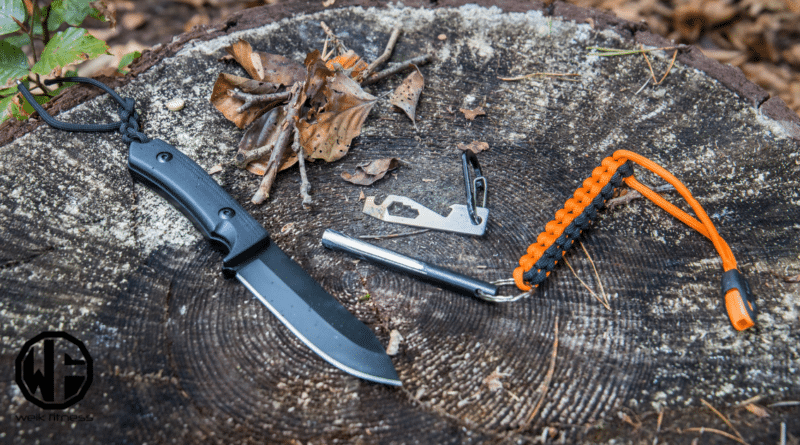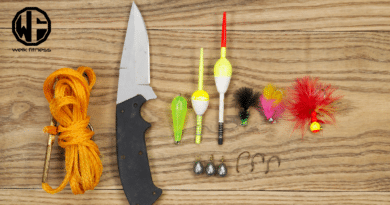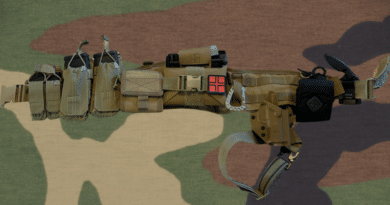Bushcraft Skills: Surviving and Thriving in the Great Outdoors
Wouldn’t it be awesome to have bushcraft skills, as you see in the movies, that allowed you to survive in the great outdoors? Well, why don’t you learn them?
I totally get it… The question of which bushcraft skills are necessary for nature survival can be intimidating — like creating fire without matches or building shelters from natural resources.
Through a blend of careful study and practical application, I’ve discovered strategies that truly work. I went down the rabbit hole to learn a bunch of cool skills, and I want to share a good portion of them with you.
In this article, we’ll dive deeper and explore together the mastery of essential bushcraft skills. From sparking fires and setting up shelters to finding water and gathering food, you’ll acquire simple strategies to help you survive in the wild.
Are you prepared to get started and learn some outdoor skills and bushcraft basics? Let’s dive into this beginner’s guide for survival skills and bushcraft.
Table of contents
Key Takeaways
- Bushcraft involves living well in the wild by mastering skills such as creating fires without modern tools and constructing shelters from what nature offers.
- It’s crucial to know how to locate and purify water, as well as how to search for food to endure in the wilderness.
- More sophisticated bushcraft skills cover manufacturing tools from flint, knotting for various purposes, and finding your way using the stars or a compass.
- It’s vital to understand how to treat injuries, signal for help, and secure food through hunting or trapping for safety.
- Owning reliable equipment such as a dependable knife, axe, saws, and the proficiency in their use enhances the likelihood of survival.
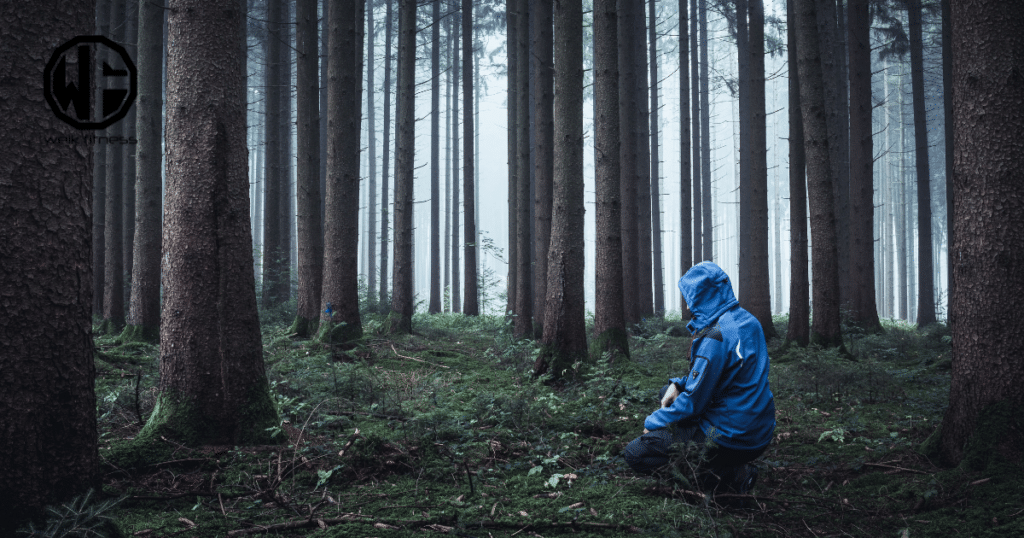
Defining Bushcraft
Bushcraft refers to the set of skills and knowledge necessary for thriving in the wilderness. It entails a deep understanding of nature, survival techniques, and utilizing natural resources for sustenance.
These skills are distinct from traditional survival methods as they embrace an ethos of living in harmony with the environment rather than just enduring it.
Bushcraft vs Survival: Key Differences
I like spending time in the woods (unfortunately, not as much time as I’d like) practicing skills that keep me sharp and ready.
Below, let’s look at the difference between bushcraft and survival. These two are often confused, but they are not the same. Let me break it down for you.
| Bushcraft | Survival |
|---|---|
| Focuses on thriving in nature | Focuses on staying alive |
| Uses skills to live off the land | Uses whatever means to get back to safety |
| Relies on knowledge of nature | Relies on quick thinking and improvisation |
| Practices include fire starting with primitive tools, building shelters from natural materials, and foraging | Practices include signaling for help, finding immediate shelter, and emergency water collection |
| Emphasizes a deep connection with nature | Emphasizes survival until rescue or escape |
| Tools include bushcraft knives, axes, and saws | Tools are often whatever you have on hand or can find |
In my own experience, I’ve leaned on bushcraft to make the wilderness feel like home. I’ve made fires without matches, built shelters from the trees around me, and found food in the underbrush. This isn’t just about surviving; it’s about living with the land.
Survival, on the other hand, is what you hope you never have to use but must know. It’s the skills that get you out of a bind fast. I’ve had moments where quick thinking made all the difference between a bad situation and a safe return.
To sum it up, bushcraft and survival serve different purposes. Bushcraft enriches your experience in the wild, making you part of it. Survival skills are your lifeline when things don’t go as planned. Both are crucial and knowing the difference has made me a better prepper and survivalist.
That said, you can learn bushcraft skills that can help you in survival scenarios.
Essential Bushcraft Principles
Bushcraft is all about skills to live in the wilderness. It’s not just surviving but thriving with nature. The basics are finding water, purifying it, and knowing how to use simple tools like a knife or fire starter.
One key principle? Always have a way to make clean drinking water because staying hydrated is crucial out here.
RELATED: How-To Guide On Mastering Survival Shelter Building
I’ve learned that patience and practice go a long way with bushcraft skills. You don’t become an expert overnight. Starting fires without matches meant lots of trial and error for me at first.
But now, I can do it confidently, using things like bow drills and flint. Building shelters also took time to master, as did safely identifying which plants I could eat when foraging.
My journey has taught me that bushcraft is more than survival gear or techniques; it’s connecting deeply with the outdoor world around us. We have the means to live outdoors if we have the right bushcraft skills.
Basic Bushcraft Skills
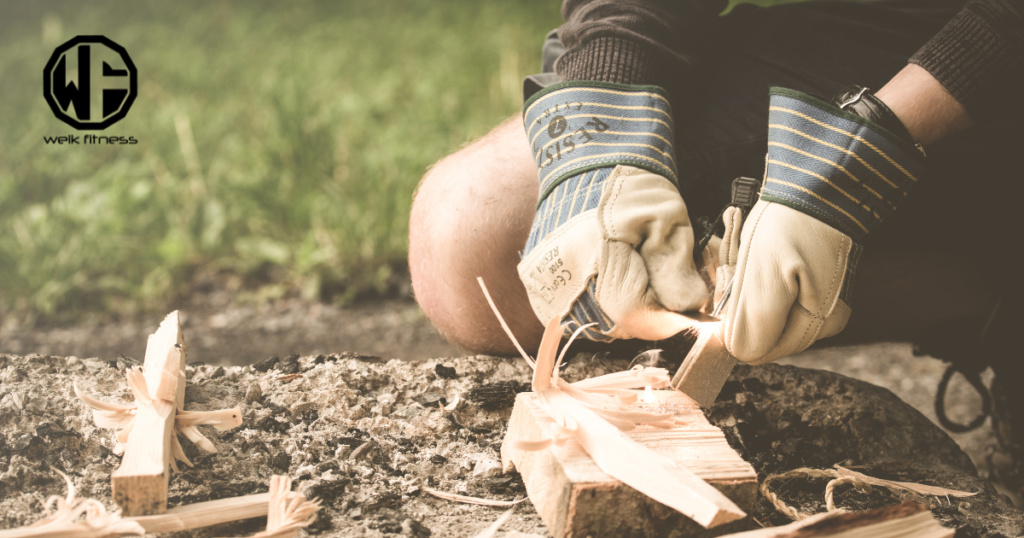
For those who have never been out in the wilderness, fire can be started without matches or a lighter. A shelter for protection can be built with natural materials like branches or leaves. Water collected from streams and rivers must be purified to make it safe to drink. Food can be found in the wild through foraging, but identifying edible plants is crucial for safety.
But in order to do all of those things just mentioned, you need some basic bushcraft skills.
1. Bushcraft Fire Starting Without Matches
I’ve spent a lot of time outdoors, and one skill I’ve mastered is starting a fire without matches. This technique is crucial for wilderness survival and thriving in the great outdoors. Here’s how you can do it too:
- First, gather dry tinder like dead leaves, pine needles, or grass. These materials catch fire easily.
- Collect kindling, such as small twigs and branches. You’ll need these to build your fire once the tinder ignites.
- Find larger pieces of wood for fuel to keep your fire going longer.
- Use a fire bow. This method involves a bow, a string, and a spindle to create friction.
- Attempt the hand drill technique by spinning a stick between your hands and pressing it into a baseboard with a notch at its edge.
- Flint and steel or a ferro rod are effective, too. Strike them together to create sparks that ignite the tinder.
- A magnifying glass can focus sunlight on your tinder pile on sunny days to start a fire.
Each method requires practice to get right — I mastered this through repeated attempts and consistency.
Knowing these basics helps me survive in tricky situations and also makes bushcraft camping more enjoyable and safe. Whether it’s for warmth (which you should have an emergency survival blanket in your pack) or cooking, mastering the art of fire starting without modern tools is empowering.
In my adventures, using natural materials effectively has been crucial — choosing the right kind of tinder and ensuring everything is dry enough makes all the difference.
And don’t overlook safety; always clear an area around your fire spot to prevent unintended spreading. It’s highly frowned upon if you burn down acres of forest because you were negligent.
Through lots of practice, I’ve gotten good with various techniques, from traditional flint sparking to advanced solar methods with a lens.
By passing these skills on to others in the survival community or through bushcraft forums online, I’ve aided many beginners in their first steps to becoming proficient at outdoor survival tactics.

These moments around the campfire have sparked confidence and brought me closer to nature in ways I never imagined before acquiring these fundamental bushcraft skills.
2. Building Bushcraft Survival Shelters
Building a shelter is crucial for survival in the wild. Below is an outline for building a bushcraft shelter:
- Bushcraft shelters emphasize self-reliance and resourcefulness in outdoor survival.
- Key shelter options include tarp shelters, natural material constructions using branches and leaves, and lightweight tarps.
- Essential skills for building shelters include tarp pitching, ridgeline tying, creating ground pads for sleeping, and using bushcraft tents.
- Alternatives to building shelters are important when regulations apply.
- Mastering bushcraft skills like shelter building enhances the ability to thrive in wilderness environments.
3. Water Source Collection and Purification
As a survivalist or prepper (you can call me whatever you want), I understand the immense importance of water collection and purification. In the wilderness, access to clean water is crucial for survival.
Methods for Water Collection:
- Utilize natural depressions in the terrain or capture rainwater.
- Consider utilizing concepts such as “natural landmarks” and “map and compass basics” to identify potential water sources.
Purification Techniques:
- Craft filters using sand, gravel, and charcoal to remove impurities.
- Boil collected water to make it safe for consumption.
- Know that lightweight water filtration systems are available for use in the wilderness, such as a LifeStraw, Survival Filter, Aqua Tabs, and even something like a GRAYL (all things I’ve purchased and used).
Advanced Purification:
- Familiarize yourself with making feather sticks or utilizing flintknapping techniques to create tools for water purification.
Supplies for Water Collection and Purification:
- Ensure you have necessary gear such as a “survival kit,” “water filter,” and appropriate “cordage” to aid in water collection and purification efforts.
By mastering these essential skills, you can equip yourself with the knowledge required to ensure your ability to procure clean water in challenging outdoor environments.
4. Bushcraft Foraging and Bushcraft Hunting in the Wild
Foraging for food in the wild is a core bushcraft skill that’s crucial for self-sufficiency and survival. Here are some key points to consider:
- Proper identification of wild edibles is essential to find safe plants.
- Supplementing food sources with foraging can be beneficial for long-term survival.
- Beginner foragers can start with easily recognizable plants like wild onions, garlic, and blackberries.
Keep in mind that mastering the art of foraging takes time and practice, but it’s an invaluable skill for thriving in the wilderness.
Advanced Bushcraft Tips and Tricks: Bushcraft Skills You May Need
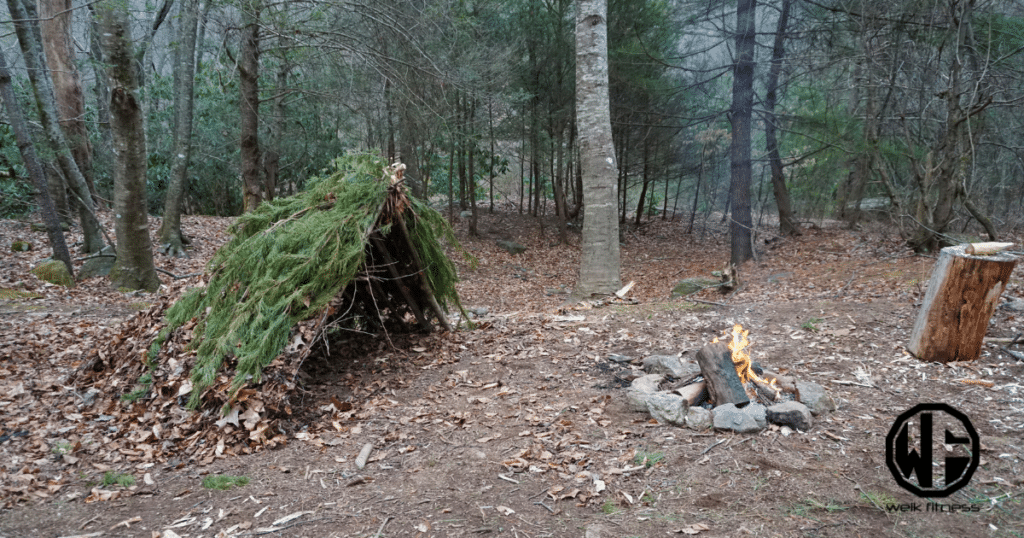
Let’s explore advanced bushcraft techniques, covering making a feather stick, whittling and wood crafting, flintknapping and tool creation, as well as knot tying for various needs.
These camping and survival skills go beyond basic survival and can truly enhance your outdoor experience.
1. Making a Feather Stick
Making a feather stick is crucial for bushcraft:
- Use a bushcraft knife to delicately carve thin, curly shavings from wood.
- Proper cutting technique is essential for creating fine shavings without totally destroying the stick.
- Feather sticks are especially useful for starting fires in wet conditions.
- Mastering this skill and being able to build a fire is vital for maintaining body heat and signaling for help.
- Always use a proper knife sheath when not using the knife for safety.
2. Whittling and Wood Crafting
Whittling and wood crafting are essential bushcraft skills that provide the ability to create tools and resources from natural materials, fostering self-reliance in outdoor settings.
- Feather sticks: Essential for starting fires, especially in damp conditions, these are created through whittling skills.
- Advanced wood crafting techniques: Lashings and bindings are used to create arrowheads, fish nets, and toggles, enhancing survival capabilities in the wilderness.
3. Flintknapping and Tool Creation
Flintknapping is the ancient method of shaping flint into tools like arrowheads and knives, connecting us with our ancestors. Here’s what you should know about this crucial skill:
- Crafting Arrowheads: Flintknapping allows crafting sharp arrowheads for hunting or self-defense.
- Knife Making: It provides the ability to carve essential knives for various tasks.
- Cordage Creation: Producing cordage from rawhide enables crafting fishing nets and essential ropes.
- Tool Adaptation: Flintknapping skills can also be applied to adapt and modify existing tools for specific purposes.
Acquiring these skills brings a deep connection to the past and enhances one’s survival abilities in the wilderness.
4. Knot Tying for Various Needs
Knot tying is an essential skill in bushcraft, serving various practical purposes. It acts as a survival language, crucial for securing loads and maintaining equipment. There are common knots like the bowline knot, taut-line hitch, clove hitch, and figure-eight knot.
It’s important to practice different types of knots regularly to build proficiency.
Recommended knots to practice include the Lark’s Head, Prusik knot, Fisherman’s knot, and Trucker’s hitch. Lashings are also vital for making bindings, fishnets, and toggles. Maintaining knot-tying skills helps prevent forgetfulness and improves overall bushcraft competence.
Bushcraft Tools and Equipment
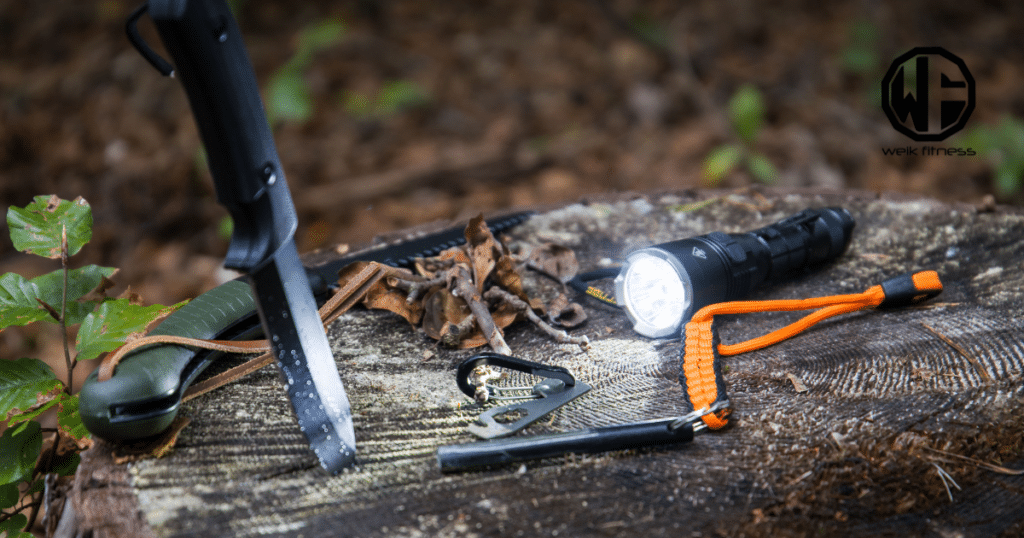
Exploring the wilderness requires essential bushcraft tools and equipment. A reliable bushcraft knife, axes, saws, and appropriate gear customized for outdoor use can greatly impact the experience. These tools form the foundation for vital skills such as constructing shelters, igniting fires, and obtaining food.
1. The Bushcraft Knife: An Essential
A high-quality bushcraft knife is crucial for outdoor tasks. When selecting a knife, consider a strong build, textured handle, and consistent sharpness. It’s also essential to regularly maintain and sharpen the blade to ensure its effectiveness when needed.
The right bushcraft knife promotes self-reliance and resourcefulness in wilderness survival situations. Learning how to use it fosters confidence when facing challenges outdoors. Keep in mind that comfort and edge retention are key factors when selecting a bushcraft knife, making it an essential tool for confidently overcoming wilderness obstacles.
2. Axes and Saws: Cutting and Splitting
When it comes to bushcraft, axes, and saws are essential for cutting and splitting wood. The axe is a versatile tool that can be used for felling trees, chopping firewood, and creating shelter materials.
It’s important to choose an axe with the right weight and length for your needs. When using an axe, proper technique is crucial to minimize the risk of accidents.
Saws are also essential in bushcraft for more precise cutting tasks such as notching or making feather sticks. A folding saw like a Silky is a popular choice due to its portability and effectiveness in cutting through various types of wood.
Understanding how each type of saw performs in different situations will help you select the best tool for your specific needs while out in the wilderness.
3. Choosing the Right Gear for Bushcraft
When it comes to bushcraft, having the right gear is essential for a successful outdoor experience. A sturdy knife is your main tool — I confidently stand by it! Look for one with a fixed blade and a comfortable grip.
Interestingly enough, I was always a folder kind of guy until I purchased some fixed blades. I actually wrote an article on fixed blades for EDC (everyday carry) that you can read here.
The two fixed blades I purchased and love are the Esee Izula 2 and the Boker Bronco Mini. I use an Ulti-Clip and secure it in my pocket so that only the handle is exposed.
A ferro rod like the Exotac FireROD or a fire steel is also crucial for starting fires in various weather conditions — believe me on this one. You’ll need a container for boiling water, along with rope and a tarp for shelter building — critical aspects of surviving in the great outdoors.
Lastly, make sure you have axes and saws suitable for cutting and splitting wood safely as well. These are my go-to tools that can save your life out there! That said, if you have a high-quality fixed blade, you can use that to split wood if you don’t have an axe or hatchet.
I’ve learned from personal experiences that safety should be your top priority when using these tools — always keep that in mind! And remember, having the right gear isn’t just about survival; it’s about thriving in the wilderness.
Navigating for Wilderness Survival
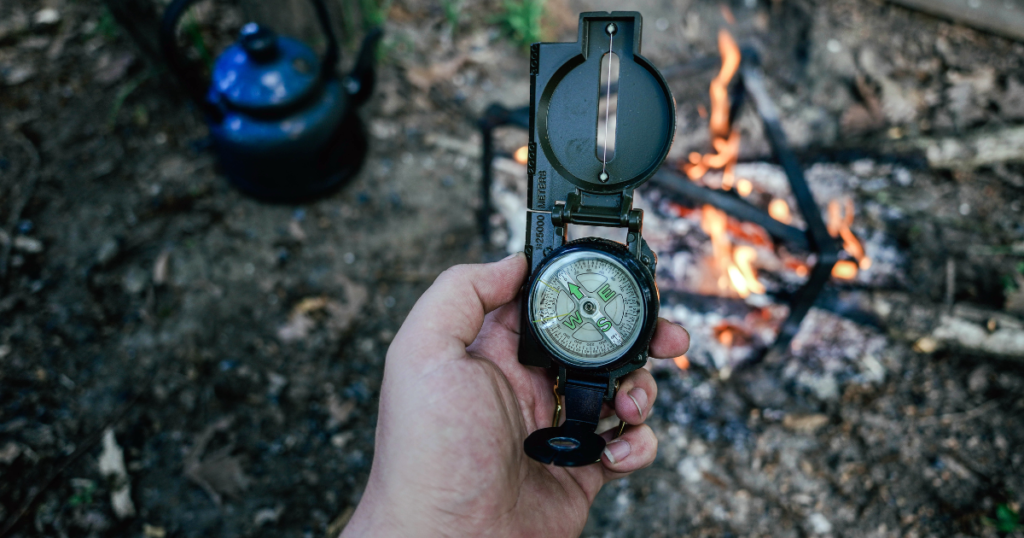
Exploring the wilderness demands essential skills to find your way. Recognizing natural landmarks, mastering map and compass basics, and acquiring star navigation techniques are crucial for survival.
1. Using Natural Landmarks
Natural landmarks are crucial for mastering navigation in the great outdoors. They contribute to self-reliance and resourcefulness when traveling through unfamiliar terrains. Learning to use natural landmarks is essential for outdoor recreation, emergency preparedness, and self-sustainability.
These techniques emphasize the practical advantages of adopting certain practices when navigating wilderness areas. Preppers and survivalists can enhance their bushcraft skills by understanding how these landmarks aid in effective wilderness navigation.
These skills provide tangible benefits as they enable one to envision possible outcomes or benefits while venturing into outdoor journeys. Understanding how to effectively utilize natural landmarks enhances a prepper’s or survivalist’s ability to thrive in the wilderness.
2. Map and Compass Basics
As a prepper and survivalist, mastering map and compass basics is crucial for successfully navigating the wilderness. Below are the essential skills to boost your self-reliance and safety in the wild:
- Use a bushcraft compass like this SUUNTO to ensure precise navigation during outdoor expeditions.
- Interpret topographical maps by identifying symbols, scales, and key features for accurate navigation.
- Grasp directions, bearings, and declination when using a compass to navigate effectively.
- Improve navigation performance by regularly practicing map reading and compass use.
- Integrate natural landmarks into your navigational strategy for an additional layer of guidance in unfamiliar territories.
- Learn the skill of star navigation for nighttime orientation when traditional methods may be challenging.
Something else to consider are pacing beads like what the military uses. I wrote an article on these helpful land navigation tools that you can read here.
3. Star Navigation Techniques
Understanding star navigation is essential for wilderness survival. It aids in determining direction without modern tools and strengthens the connection to nature.
- Mastering star navigation involves comprehending how celestial bodies assist in determining direction.
- The night sky and star positions change with seasons, necessitating flexibility in navigation techniques.
- Knowing constellations can help in identifying cardinal directions at night.
- Star navigation enhances overall self-reliance and confidence in the wilderness.
Remember, mastering star navigation enriches bushcraft skills, reinforcing your capacity to survive and thrive in the great outdoors.
Safety and Bushcraft Survival Strategies
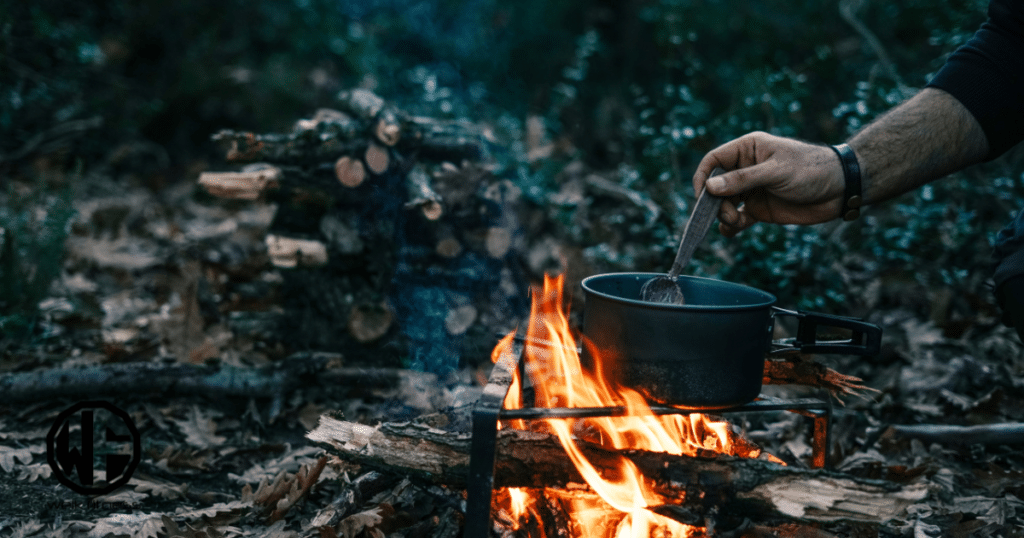
When it comes to safety and survival strategies in bushcraft, tending to wounds and basic first aid is crucial. Signaling for help in emergencies with standardized techniques that can attract attention effectively is paramount.
1. Treating Wounds, Bushcraft First Aid, and Survival Kit
When treating wounds and providing basic first aid, here are important practices to keep in mind:
- For strains, sprains, or broken bones, immobilize the affected area and seek medical attention promptly.
- In cold water exposure or winter conditions, be aware of the risk of hypothermia; dry and warm the affected person immediately.
- Recognize signs of heat stroke in summer and take quick action; cool the person down and seek medical help as needed.
- Properly stop bleeding by applying pressure to the wound and covering it with a bandage; ensure you have knowledge of local medicinal plants for additional treatment options.
- A well-equipped first aid kit is essential — consider resources like Mountain Man Medical and My Medic for high-quality supplies.
These practices should support your preparedness for outdoor emergencies.
2. Signaling for Help in Emergencies
In emergencies, signaling for help is crucial. It includes using a whistle, mirror, flashlight, or signaling fire. Specific techniques can make this process effective:
- Construct a large SOS sign on the ground using rocks or logs to signal for help.
- Three short blasts on a whistle or three flashes of a light are commonly recognized as signals for help in emergency situations. Having a flashlight with a lot of throw, like the Cloud Defensive MCH (I wear this at night to replace my Streamlight Microstream that I EDC), is great for signaling people far away.
- Utilize a signal fire with green vegetation to create a lot of smoke to attract potential rescuers’ attention.
- Use a signaling mirror to reflect sunlight towards potential rescuers effectively.
- Always carry a whistle for simple and effective signaling in an emergency situation.
- Learning and practicing different signaling methods is crucial for ensuring safety and survival in the wilderness.
These straightforward techniques can be vital when addressing the challenges of the great outdoors as they ensure your safety and increase your chances of survival.
3. Bushcraft Trapping and Hunting for Food
Hunting and trapping provide critical means of procuring sustenance in the wild.
- Trapping: Involves setting up snares or traps to capture small game such as rabbits, squirrels, and birds for food. This traditional method can be effective in wilderness scenarios and requires knowledge of animal behavior and habitats.
- Hunting: Represents an active approach to obtaining game in survival situations. It involves tracking, stealth, and marksmanship when using firearms or bows for larger prey like deer or elk.
- Sustainability: Both hunting and trapping (such as in Pennsylvania, where I live) can be sustainable methods of sourcing food as they are directly dependent on the natural environment and its resources. This ensures that wildlife populations are not depleted irresponsibly.
- Cultural Significance: Hunting and trapping have cultural significance for many indigenous communities, where these practices have been passed down through generations, often accompanied by rituals and traditions that honor the animals being hunted or trapped.
Enhancing Bushcraft Skills
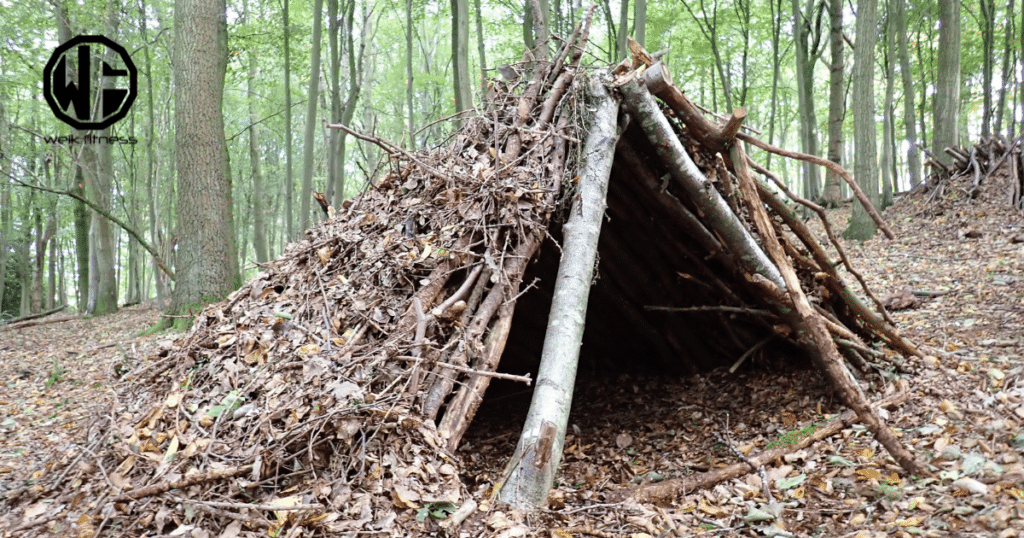
Looking to improve your beginner bushcraft skills? There are many options to explore, from engaging in practice scenarios and challenges to connecting with like-minded individuals in the bushcraft community.
These experiences not only provide valuable opportunities for skill development but also offer a space for continuous learning and growth within the outdoor survival techniques realm.
1. Practice Scenarios and Challenges
I’m no experienced bushcrafter, but I’ve discovered that regularly setting up and taking down a shelter under time constraints can improve decision-making skills and speed.
- Set a timer and challenge yourself to build a sturdy shelter within 30 minutes using only natural materials around you.
- Simulate survival scenarios by practicing fire-starting in adverse conditions, such as during heavy rain or strong winds.
- Conduct foraging exercises to identify edible plants and fungi, emphasizing the potential risks of misidentification to emphasize the significance of accurate knowledge in this area.
- Develop resources in real-time by crafting tools from scratch, using flintknapping techniques to create basic implements like knives and arrowheads.
- Incorporate navigation challenges, including map-reading competitions, to refine your proficiency in orienteering through unfamiliar terrains.
By actively engaging in these practice scenarios and challenges, bushcrafters can gain invaluable firsthand experience that will undoubtedly enhance their skillset and prepare them for unforeseen wilderness predicaments.
2. Joining Bushcraft Communities
When I began my bushcraft journey, I quickly realized the importance of joining a community. Sharing knowledge and experiences with like-minded individuals is crucial for skill development.
Communities offer mentorship and hands-on practice, enhancing everyone’s bushcraft skills.
Enrolling in classes or workshops gives me opportunities to develop and hone essential skills at various levels. This diverse learning environment provides access to different perspectives and expertise within the community.
Through these communities, I’ve come to understand that the internet has expanded access to information, but verifying its reliability is critical. The communal sharing of tools like knives, fire starters, ropes, containers, and tarps encourages collective growth and resourcefulness among members.
3. Skills to Learn and Continuous Skill Development
I’ve personally found that continuous learning and developing outdoors skills are crucial for being prepared in outdoor situations. This can include enrolling in workshops to gain practical hands-on experience or dedicating time to understanding important knowledge, like identifying edible plants or creating cordage.
Practicing these skills is essential, too, not just for recreation but also for emergency readiness and self-sufficiency.
One of the most critical aspects I’ve encountered is mastering fire-starting techniques, as they’re vital for maintaining warmth and ensuring access to clean water. Also, regularly practicing shelter building throughout the year is indispensable for survival and keeping body temperature stable.
Engaging with experienced practitioners and communities can offer a wealth of firsthand experiences to enhance skills further. So, engage in continuous learning and practice while building on your existing skill set.
Learning Bushcraft Camping Skills Can Save Your Life
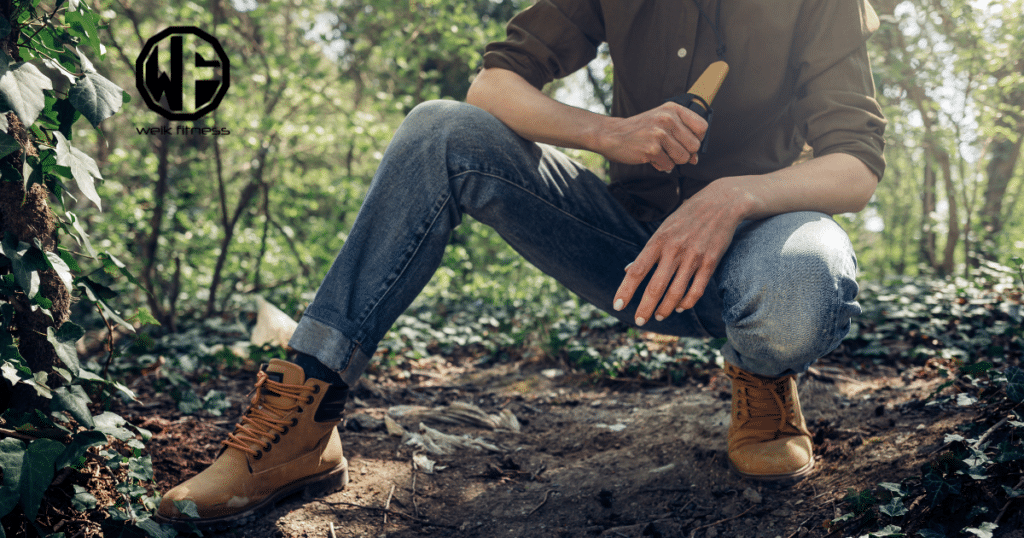
Mastering bushcraft skills is more than just surviving in the wilderness; it’s about thriving. The ability to start a fire without matches, build sturdy shelters, and find food and water in the wild provides a profound sense of confidence and self-reliance.
Maneuvering through nature with essential tools like compasses, knives, and axes offers an unmatched connection to the environment. By continually improving these skills, we can all become better prepared for unforeseen challenges while forging a deeper bond with the natural world around us.
RELATED: Bug-Out Bags — Essential Preparedness for Uncertain Times
Want to learn even more? I actually picked up an awesome set of the best bushcraft books that literally covers so many different topics that I think it would be a great asset to have — it’s called “The Bushcraft Boxed Set” by Dave Canterbury.
I highly recommend you pick up this set to read and keep as a full resource. You’ll learn some of the best survival techniques, advanced skills, bushcraft fishing, bushcraft cooking, using a bushcraft tarp, building a bushcraft campsite, primitive survival skills, and much more.
As a side note to close out this article, if you want to support our website and are in need of any tactical gear (or any product for that matter), anything you purchase using our links below will provide us with a small commission. We don’t charge for our free content and our goal is to keep it that way. We don’t have a Patreon account to put things behind a paywall, nor do we sell pics of our feet on OnlyFans.
If you choose to use the links below and make a purchase (at no additional cost to you), we greatly appreciate your support as it helps us continue to publish free content (like this article) on our website:
- Optics Planet (use code SAS5 at checkout for 5% off)
- Amazon
We have also partnered with CCW Safe. It’s the concealed carry coverage that I personally have for myself and my family in the event we need to defend our lives. Feel free to use our CCW Safe link to sign up and get some coverage to protect yourself and your family.
Also if you have a product you would like us to check out and potentially review, please contact us and let’s discuss.


